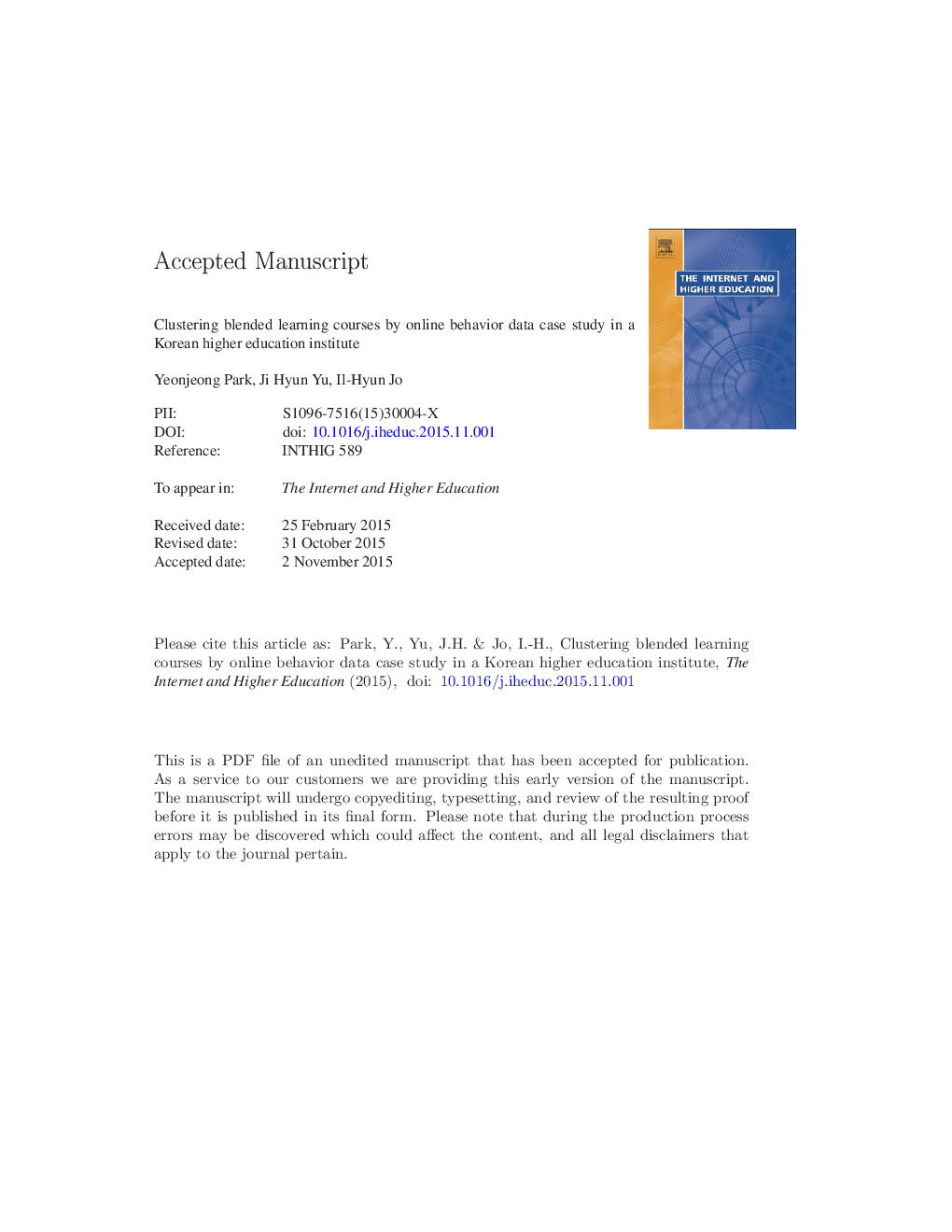| Article ID | Journal | Published Year | Pages | File Type |
|---|---|---|---|---|
| 6842000 | The Internet and Higher Education | 2016 | 36 Pages |
Abstract
Blended learning (BL) is recognized as one of the major trends in higher education today. To identify how BL has been actually adopted, this study employed a data-driven approach instead of model-driven methods. Latent Class Analysis method as a clustering approach of educational data mining was employed to extract common activity features of 612 courses in a large private university located in South Korea by using online behavior data tracked from Learning Management System and institution's course database. Four unique subtypes were identified. Approximately 50% of the courses manifested inactive utilization of LMS or immature stage of blended learning implementation, which is labeled as Type I. Other subtypes included Type C - Communication or Collaboration (24.3%), Type D - Delivery or Discussion (18.0%), and Type S - Sharing or Submission (7.2%). We discussed the implications of BL based on data-driven decisions to provide strategic institutional initiatives.
Related Topics
Social Sciences and Humanities
Social Sciences
Education
Authors
Yeonjeong Park, Ji Hyun Yu, Il-Hyun Jo,
